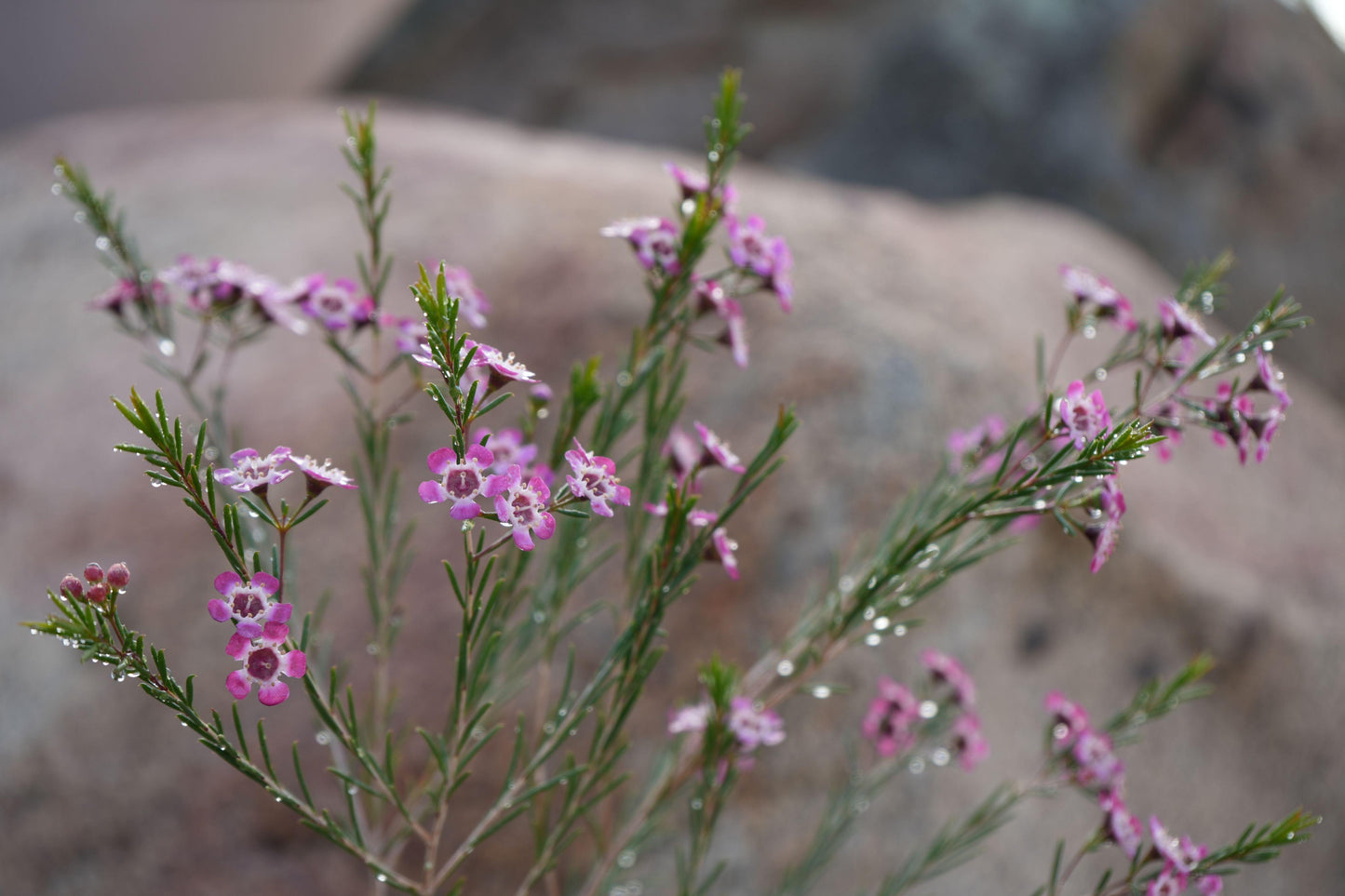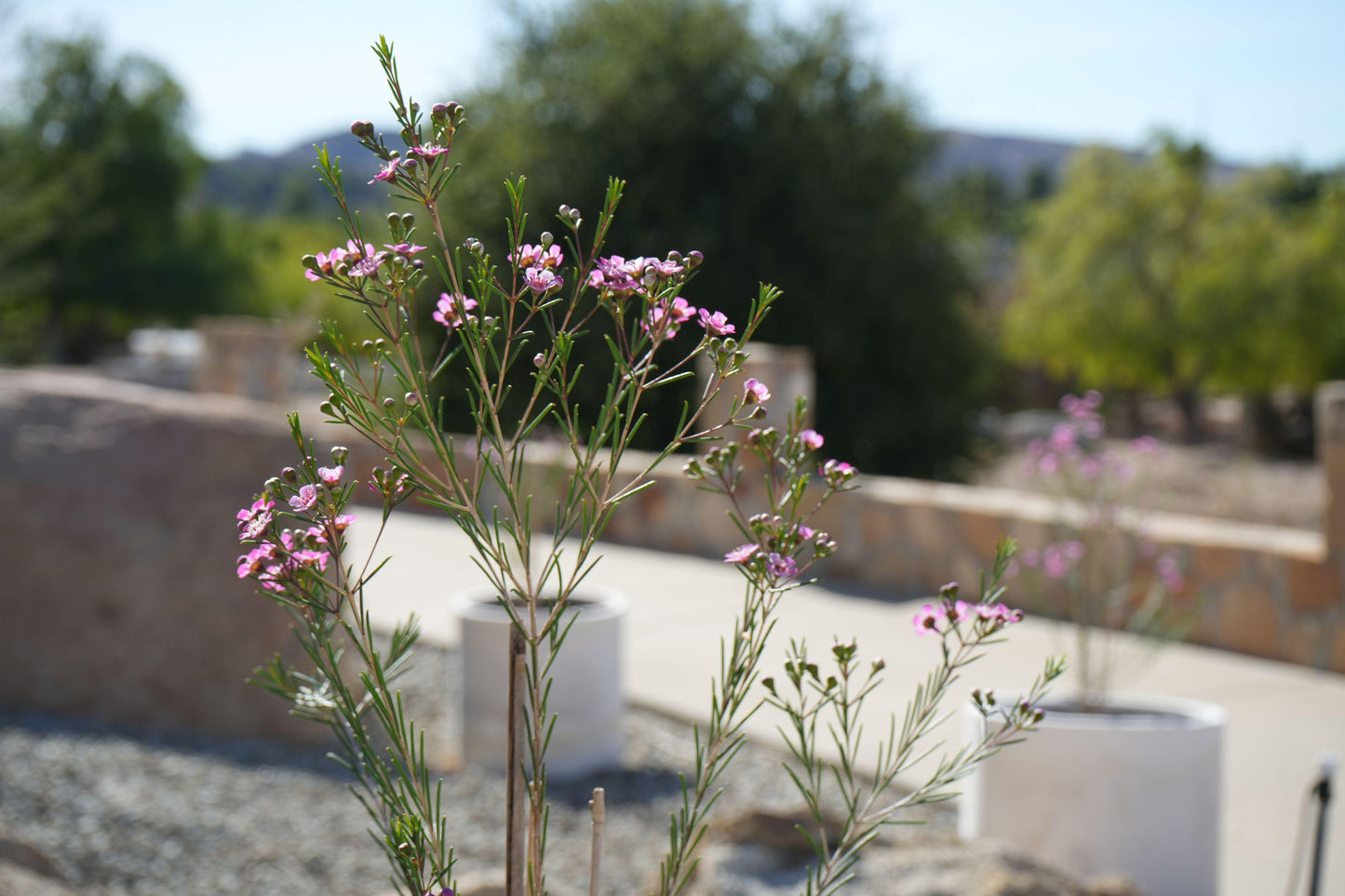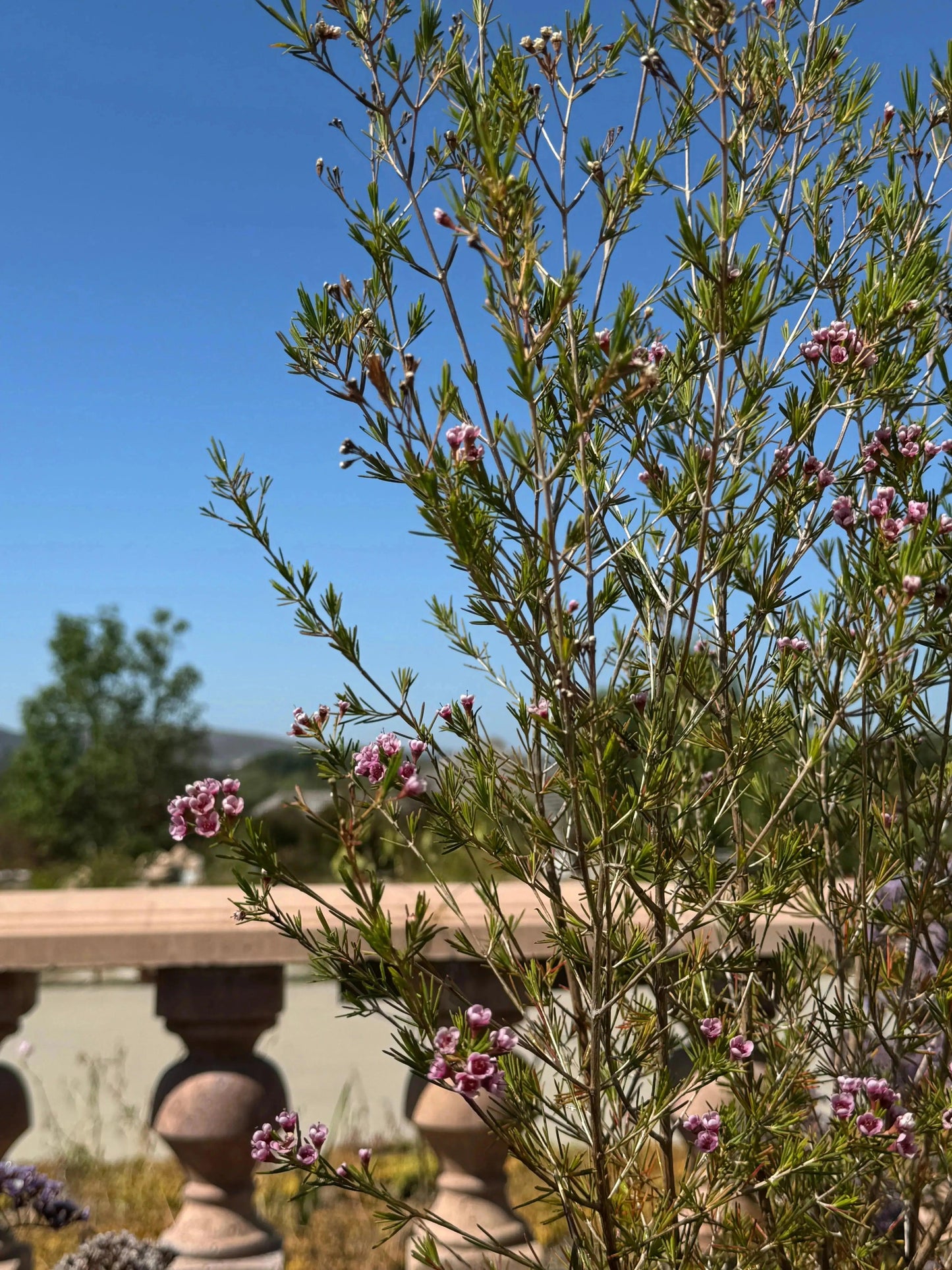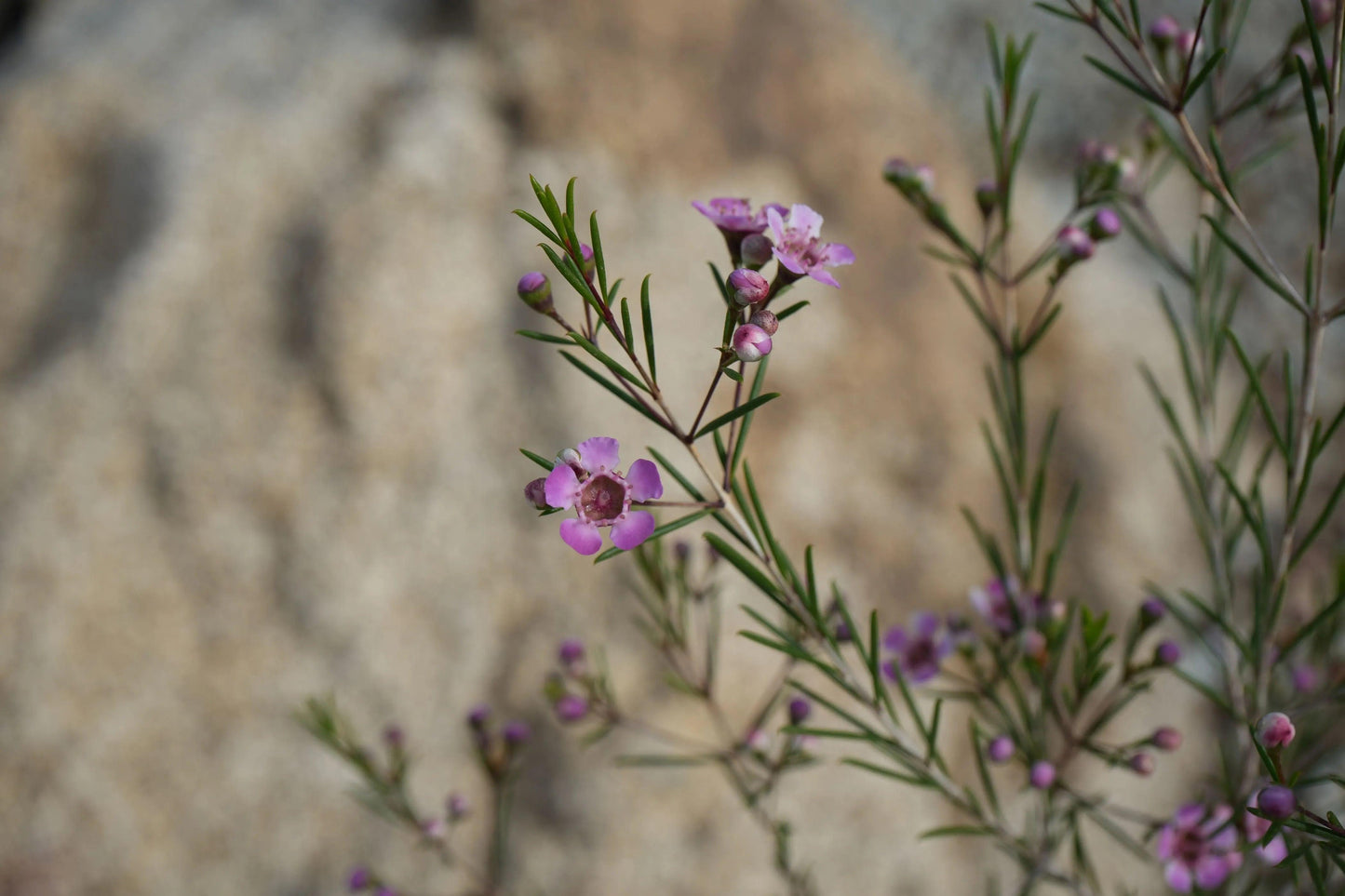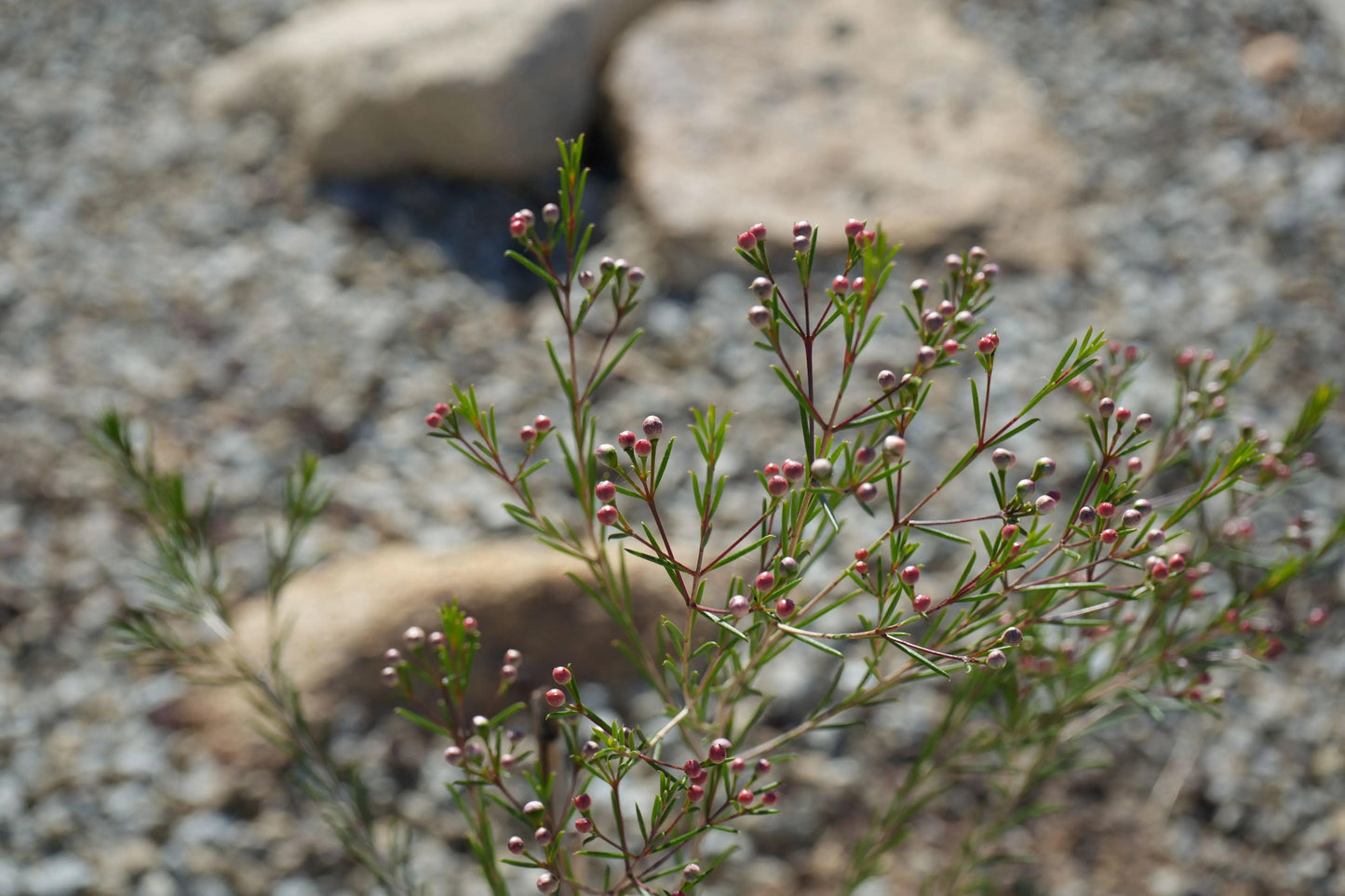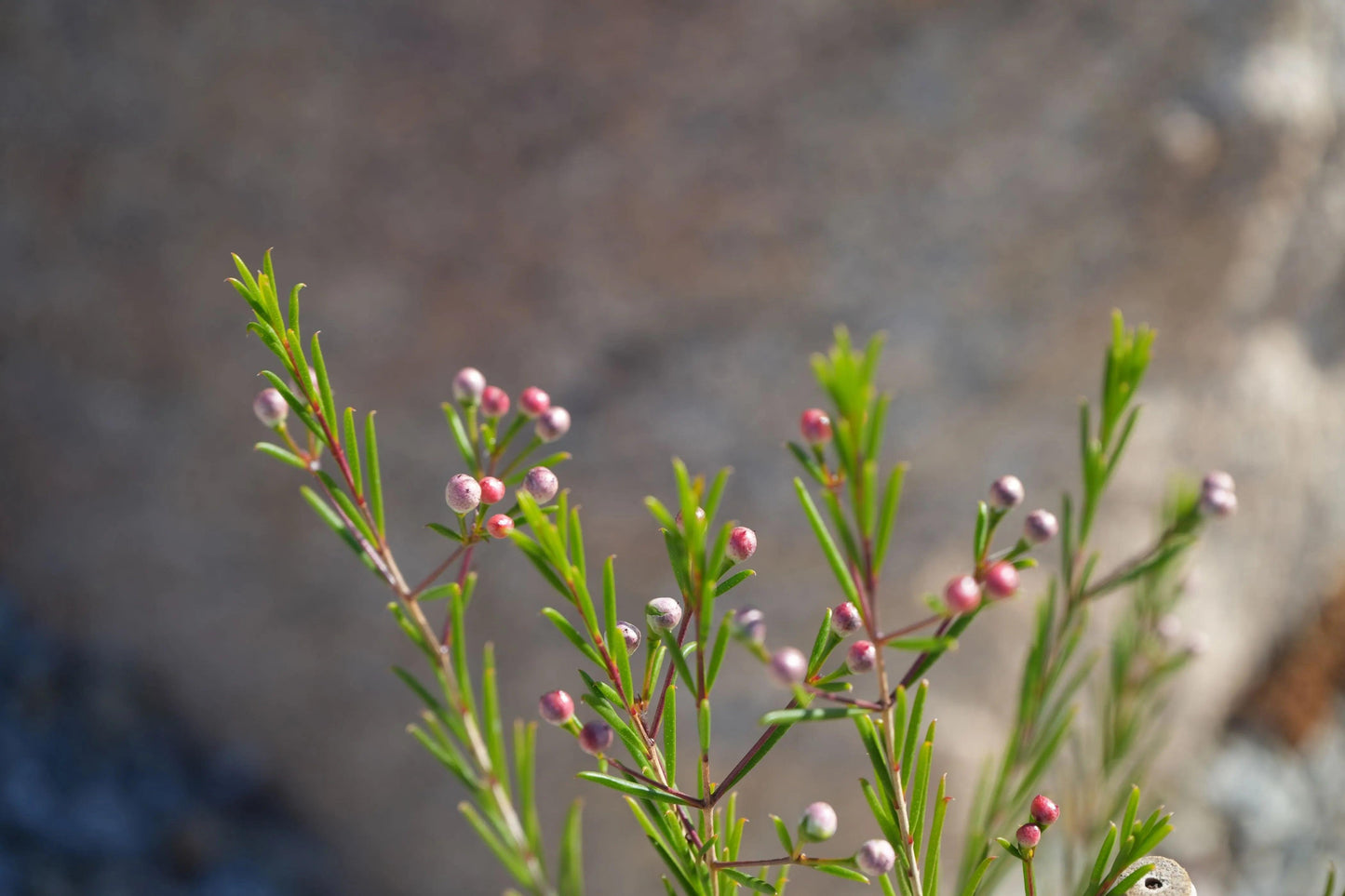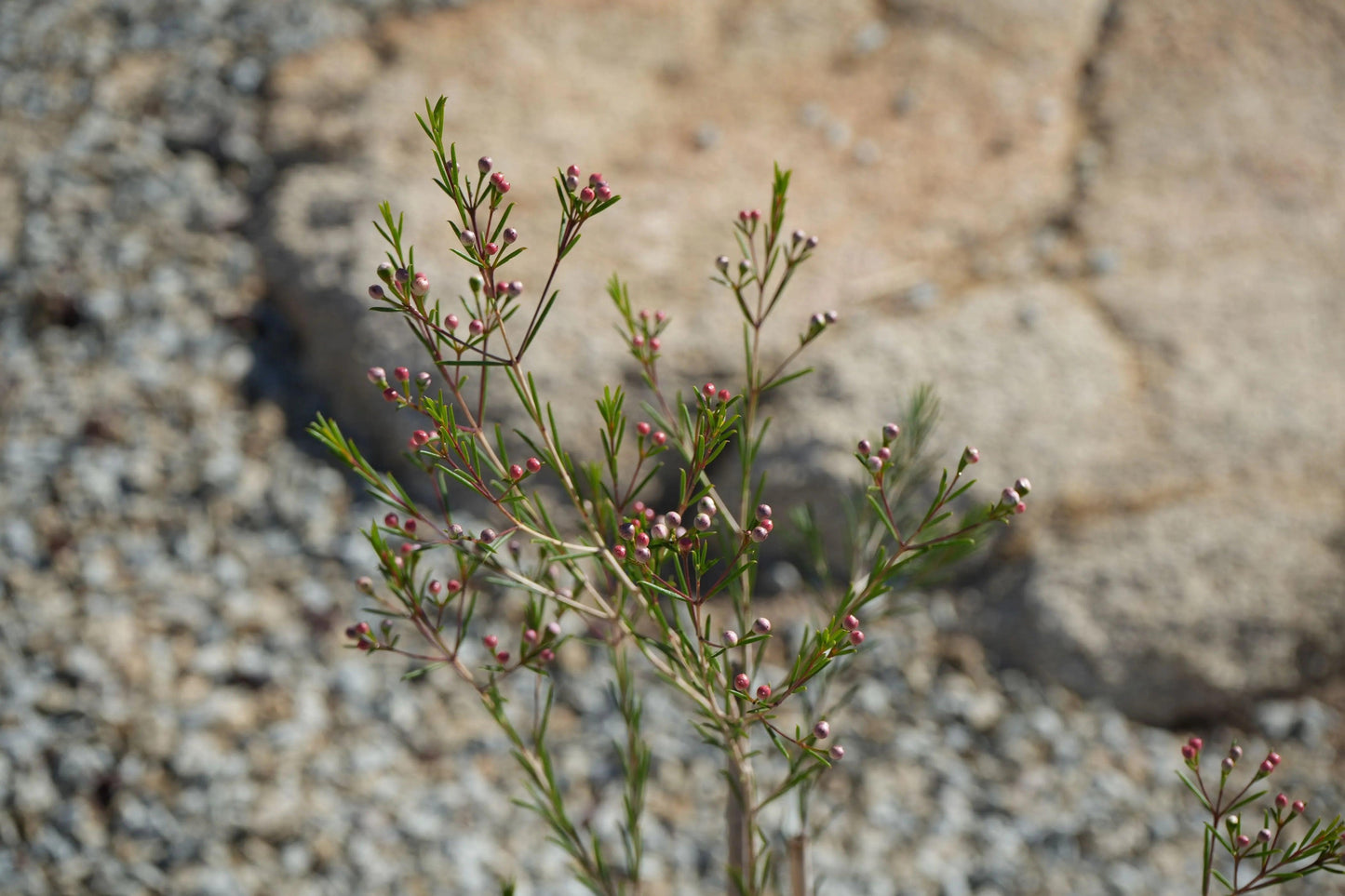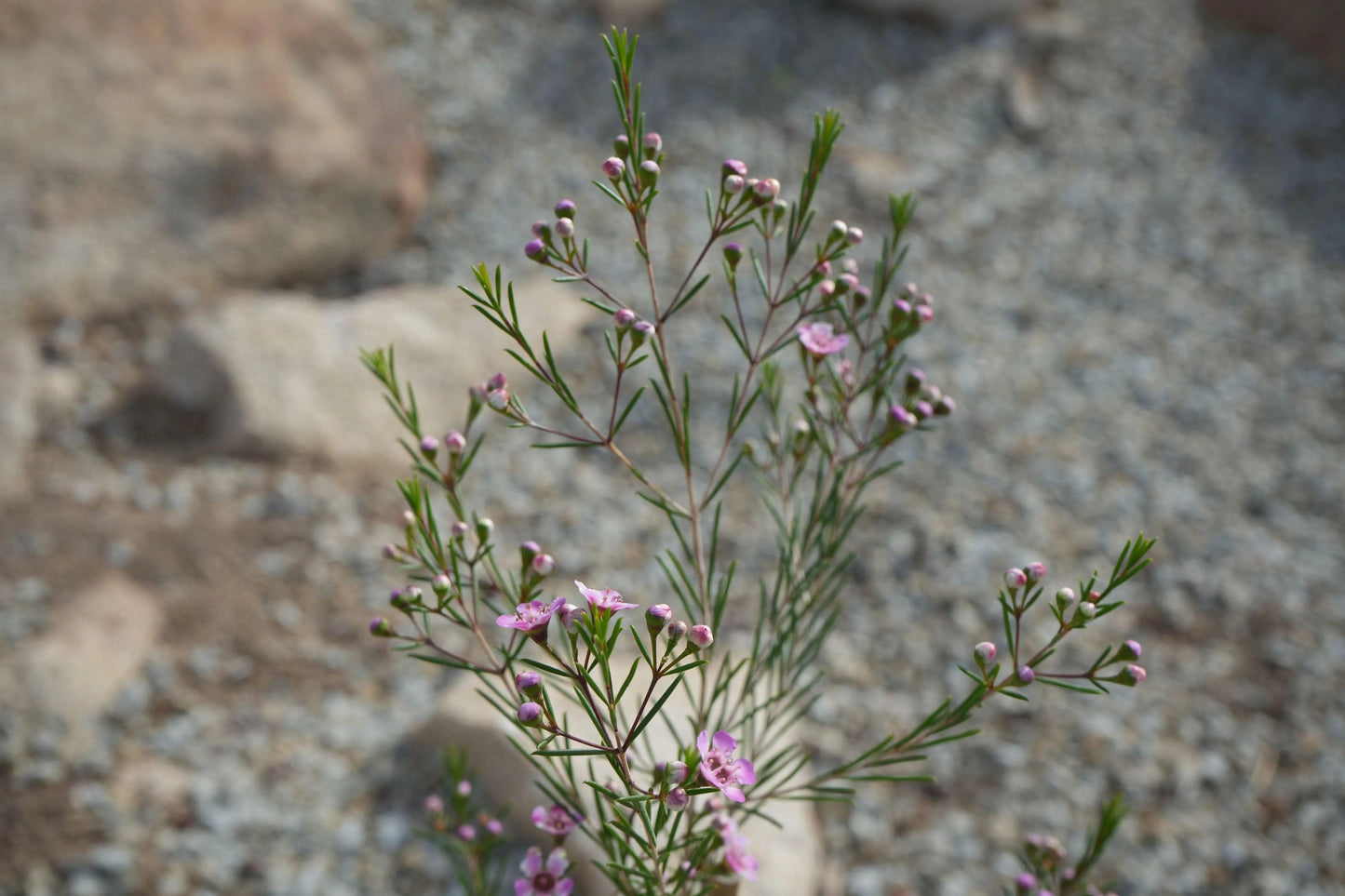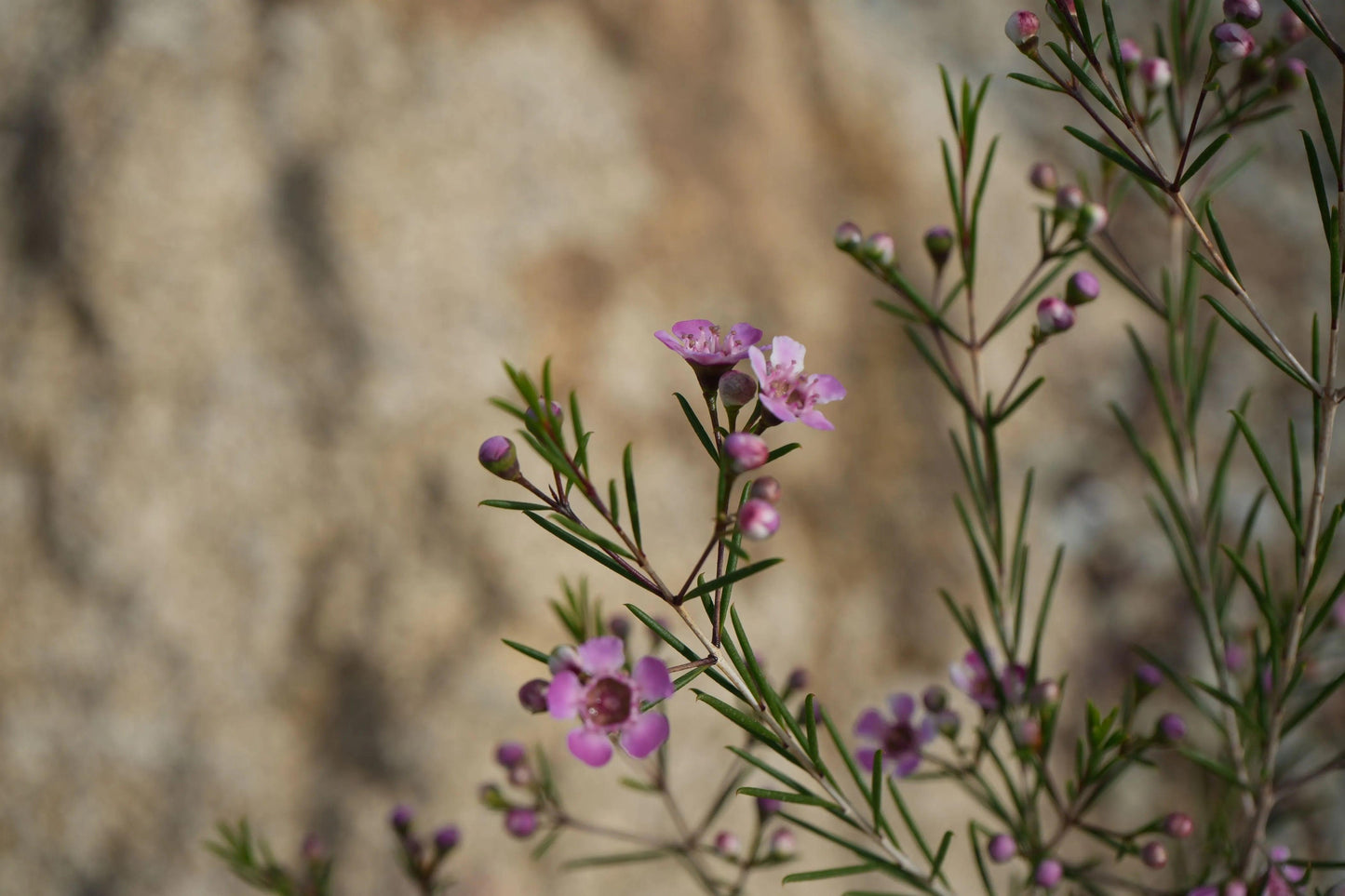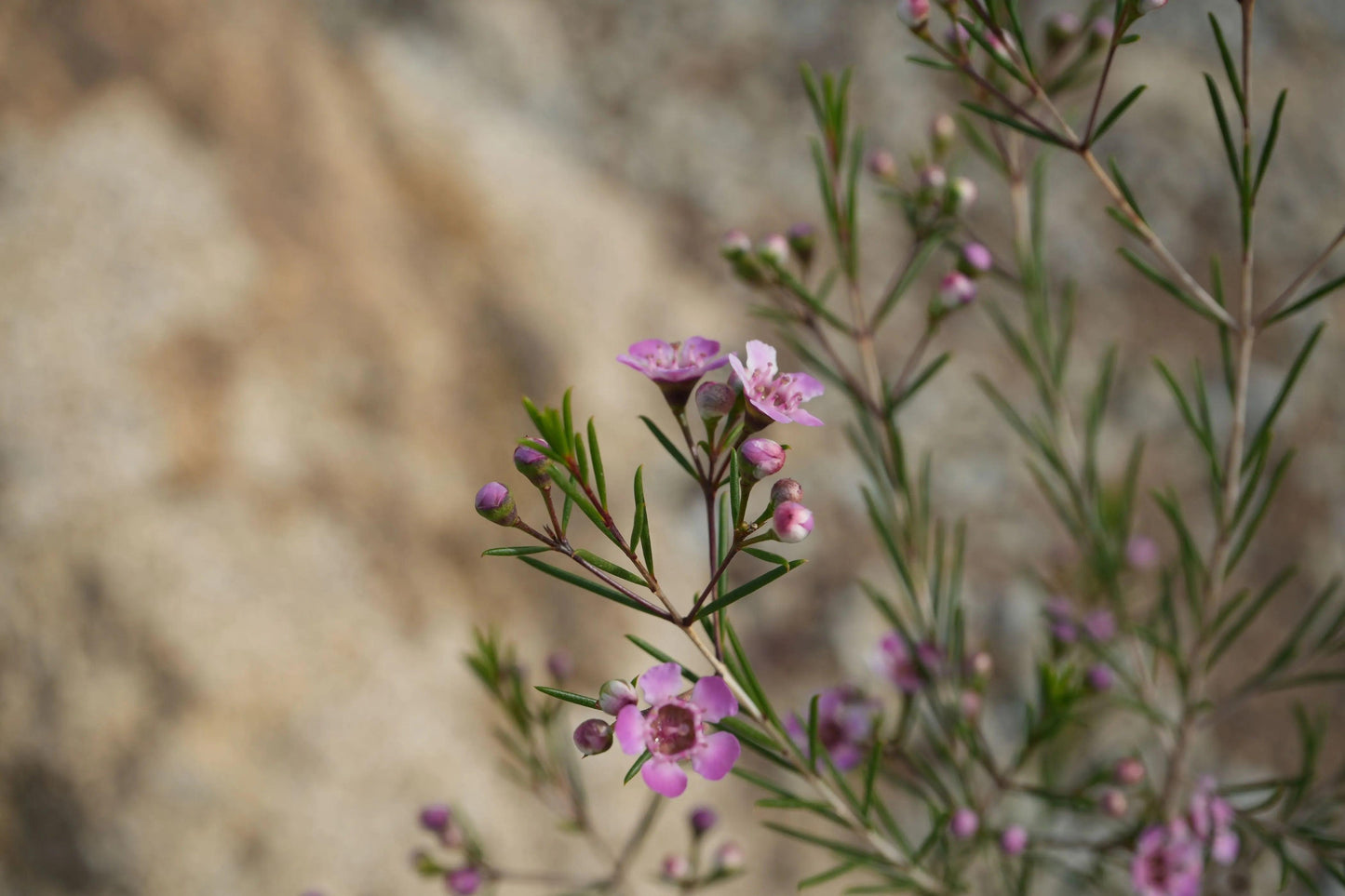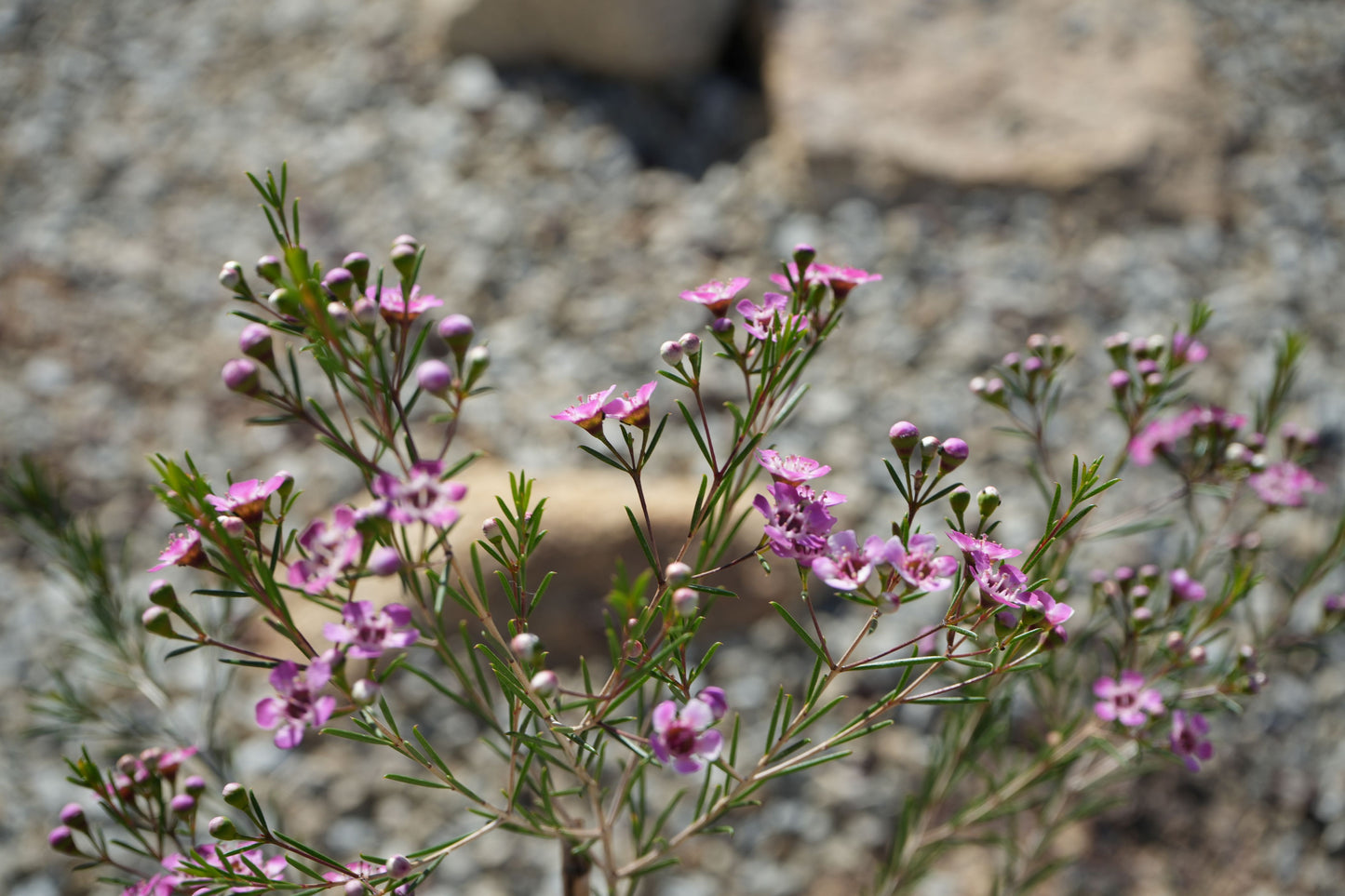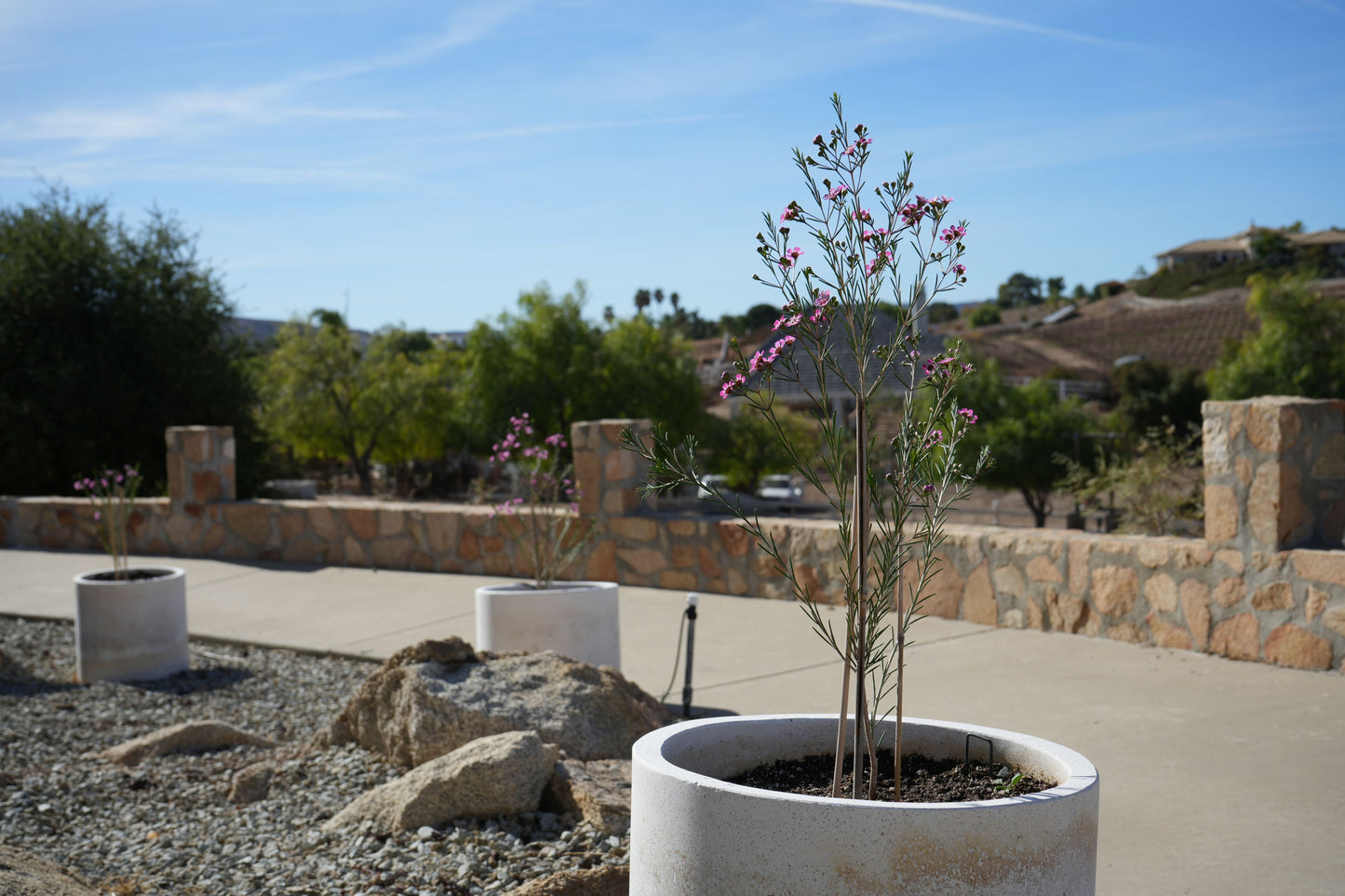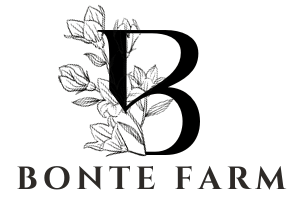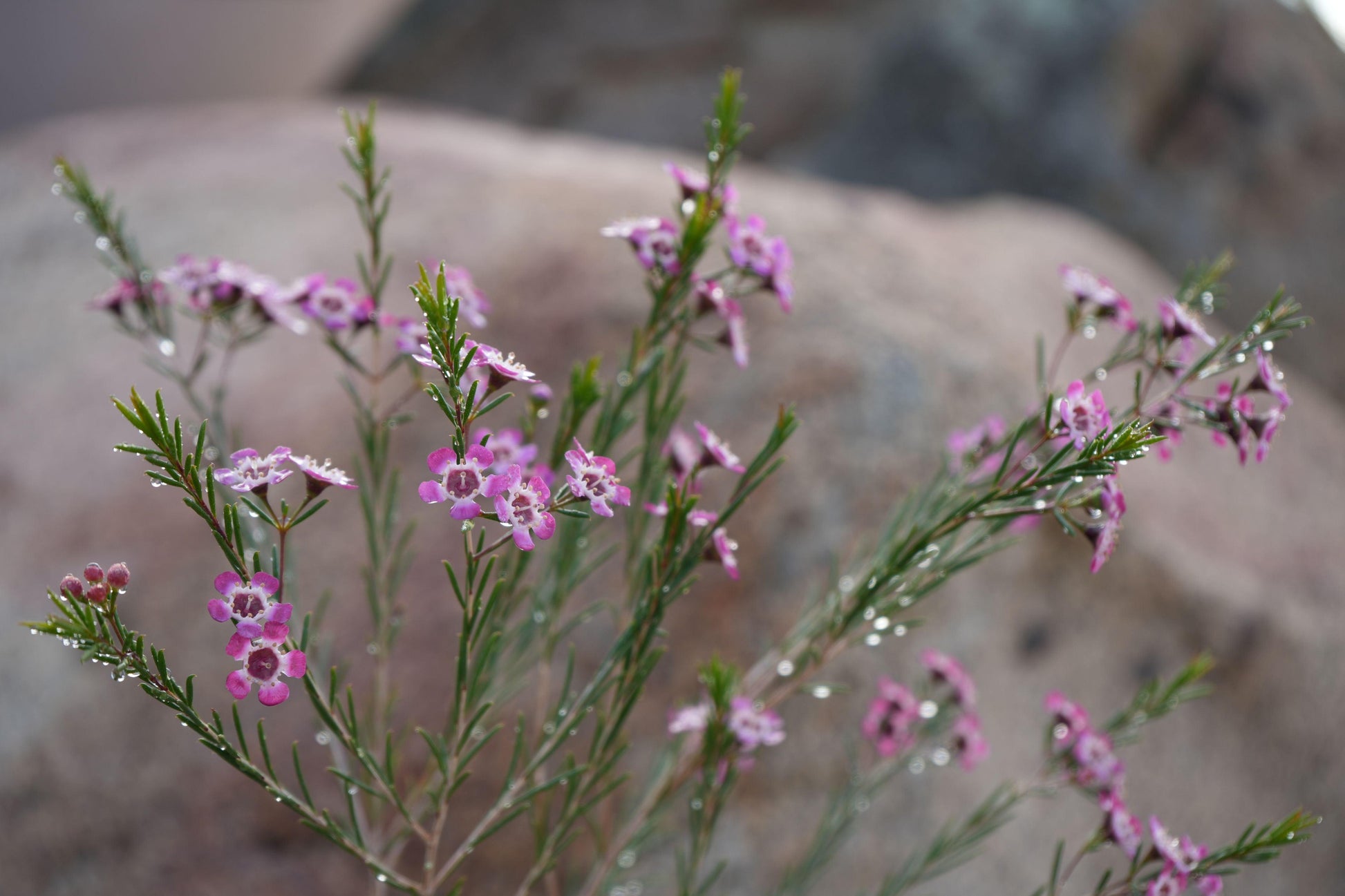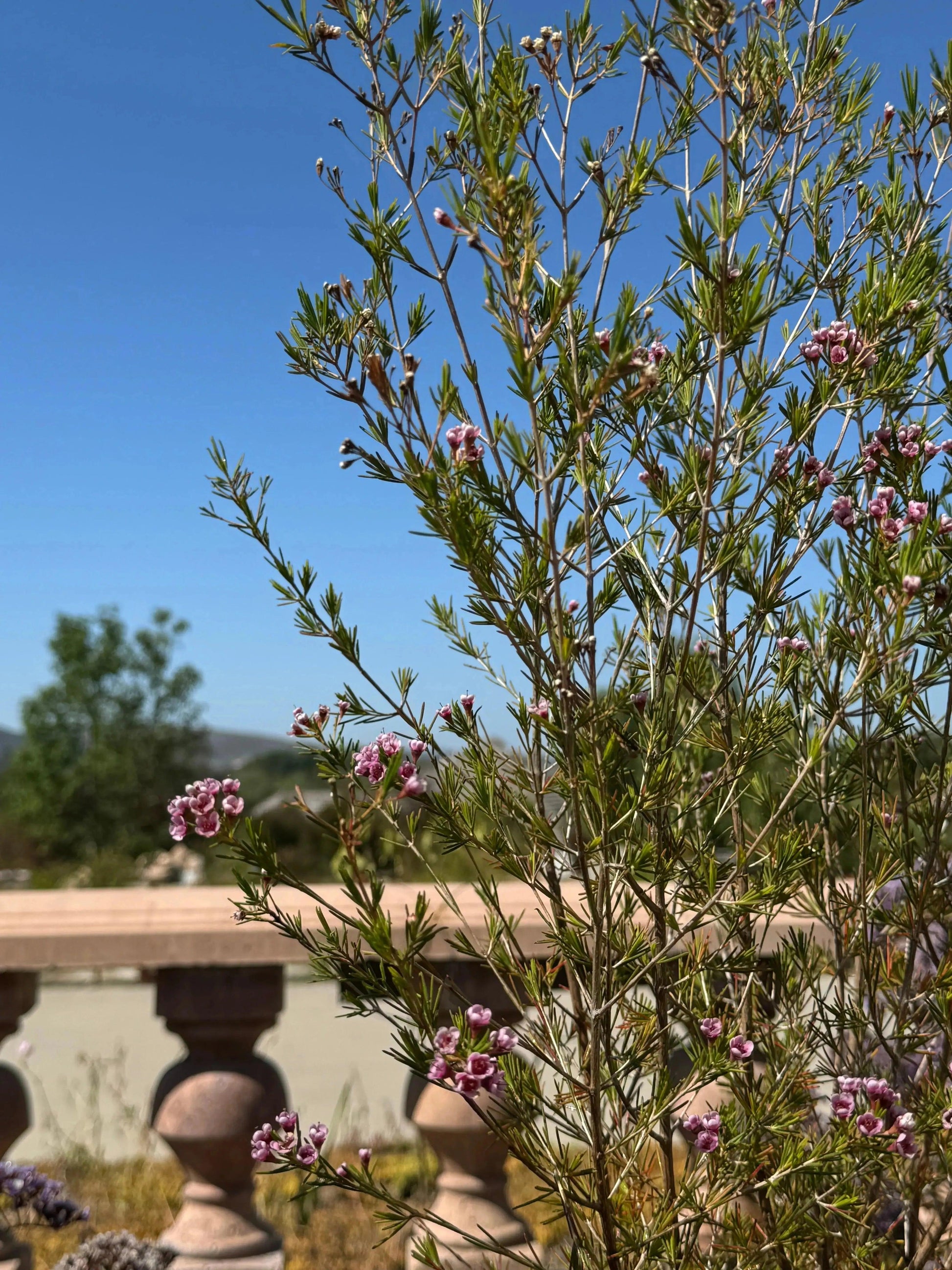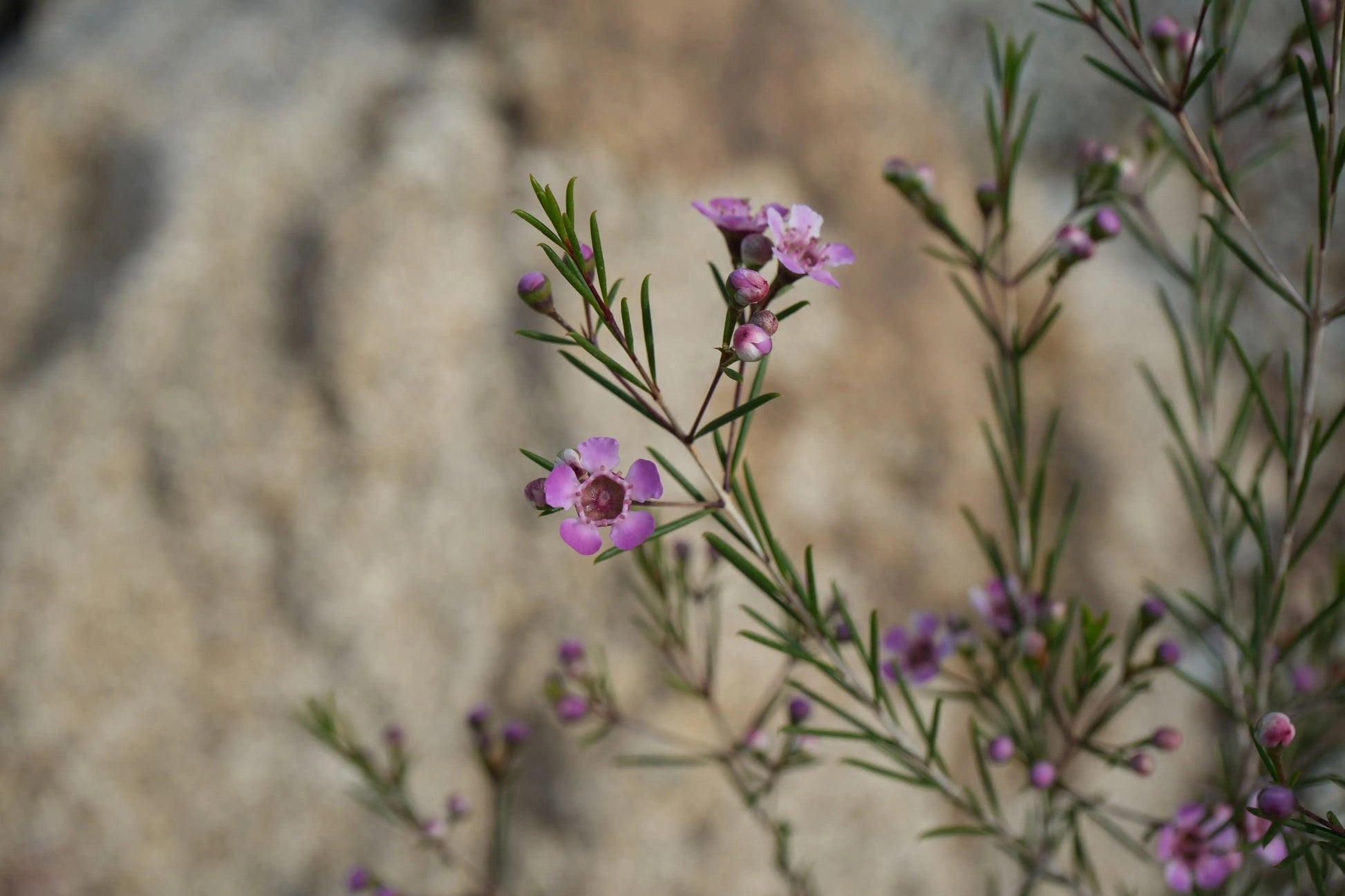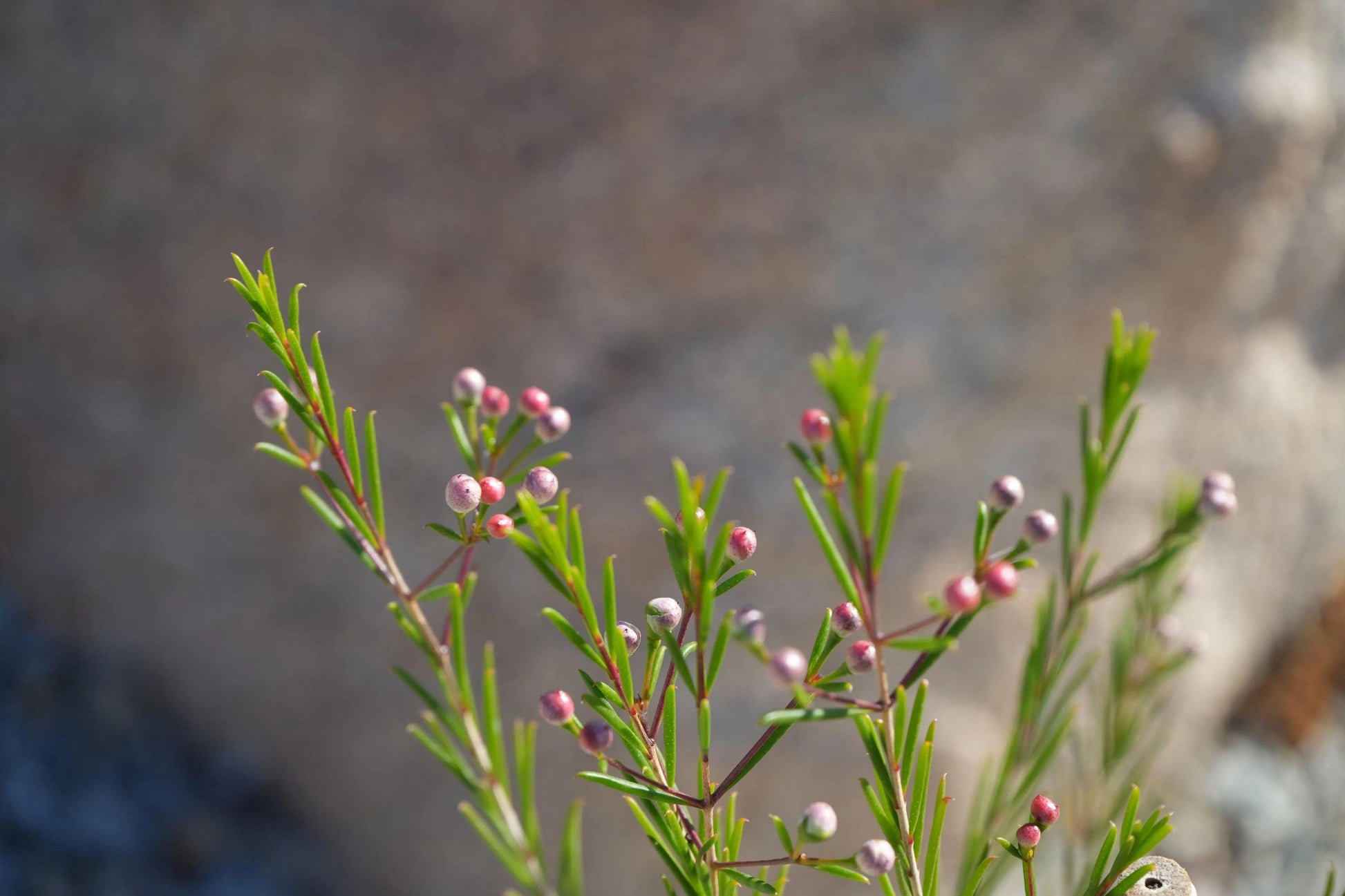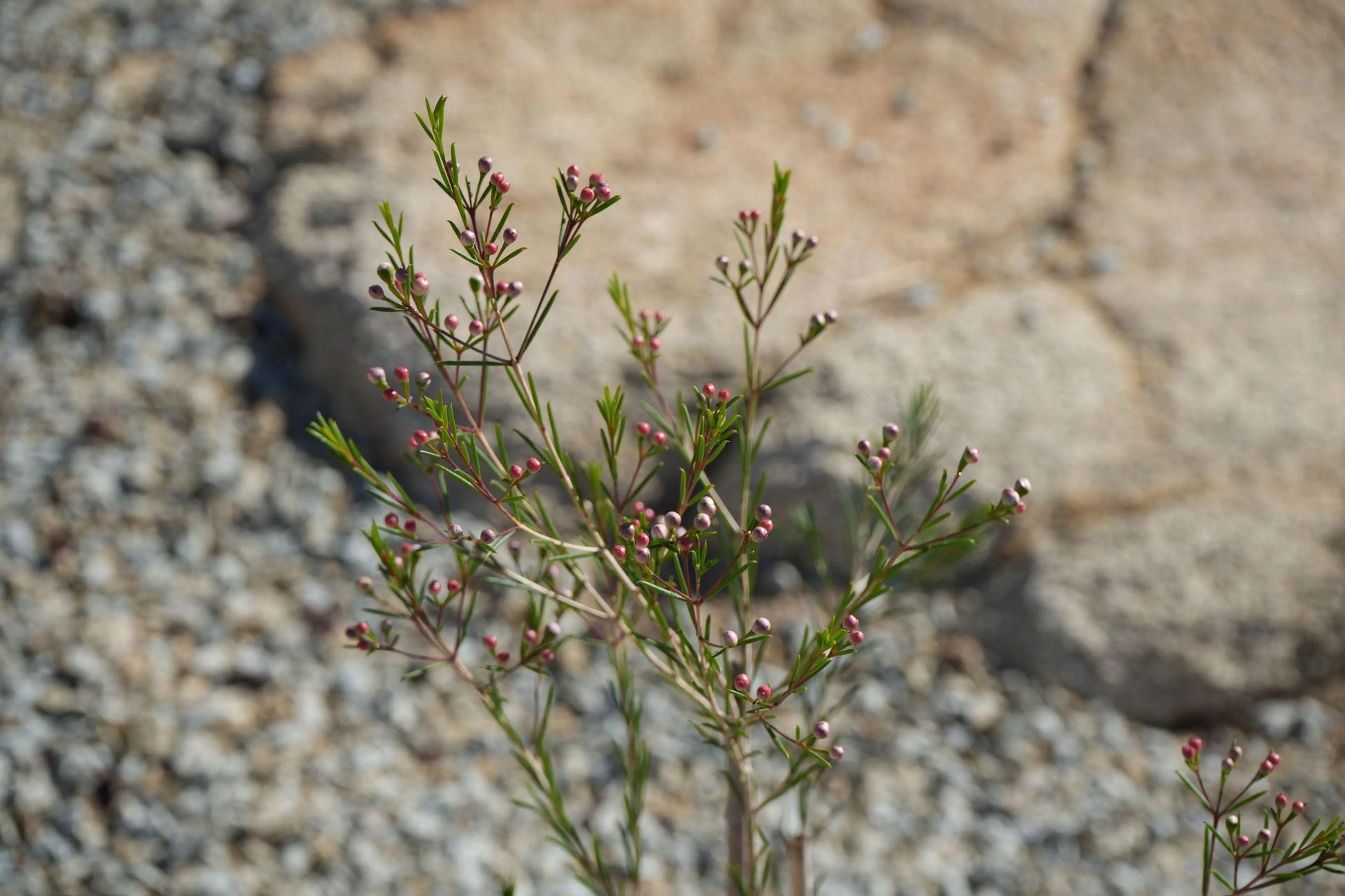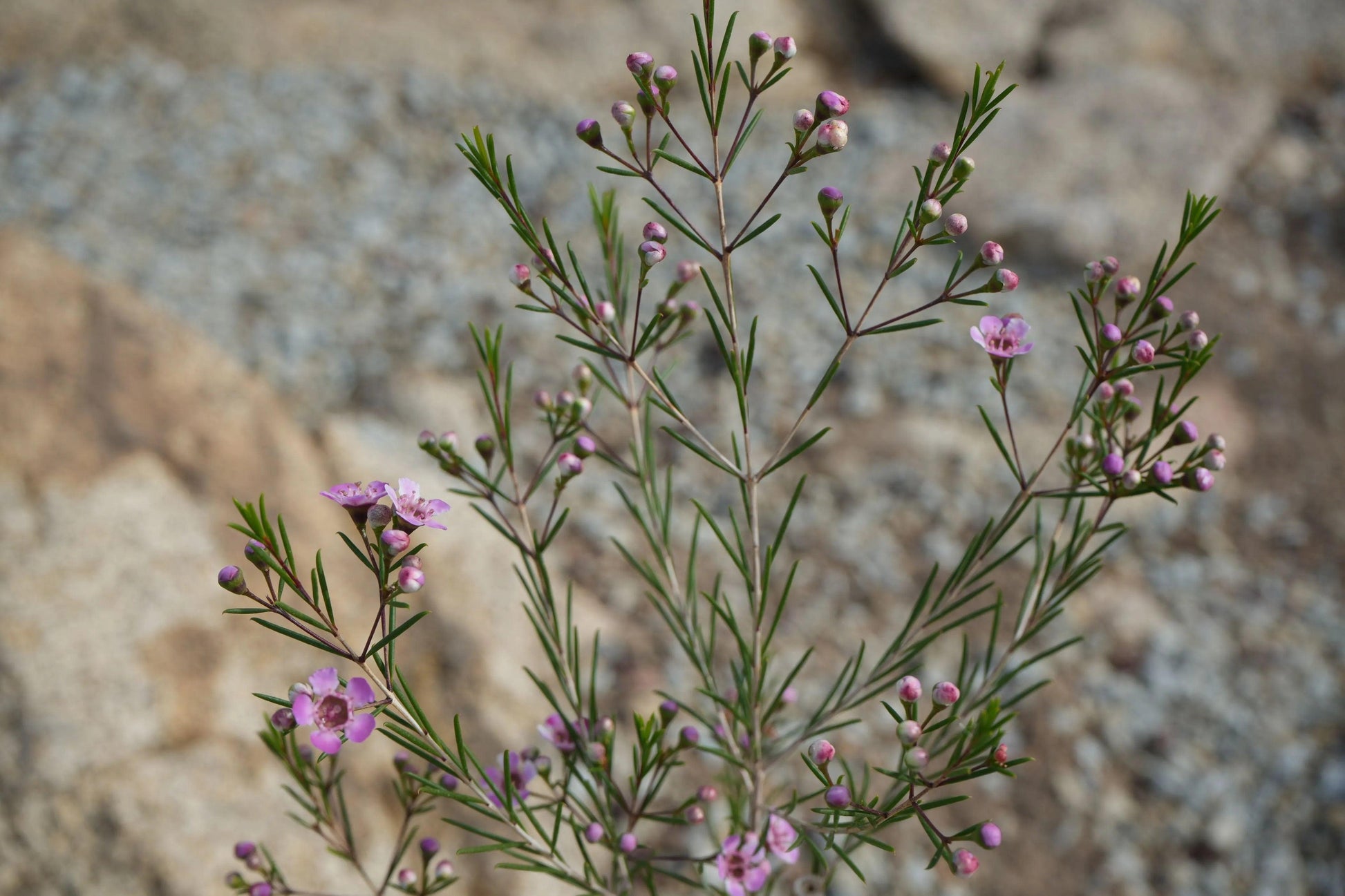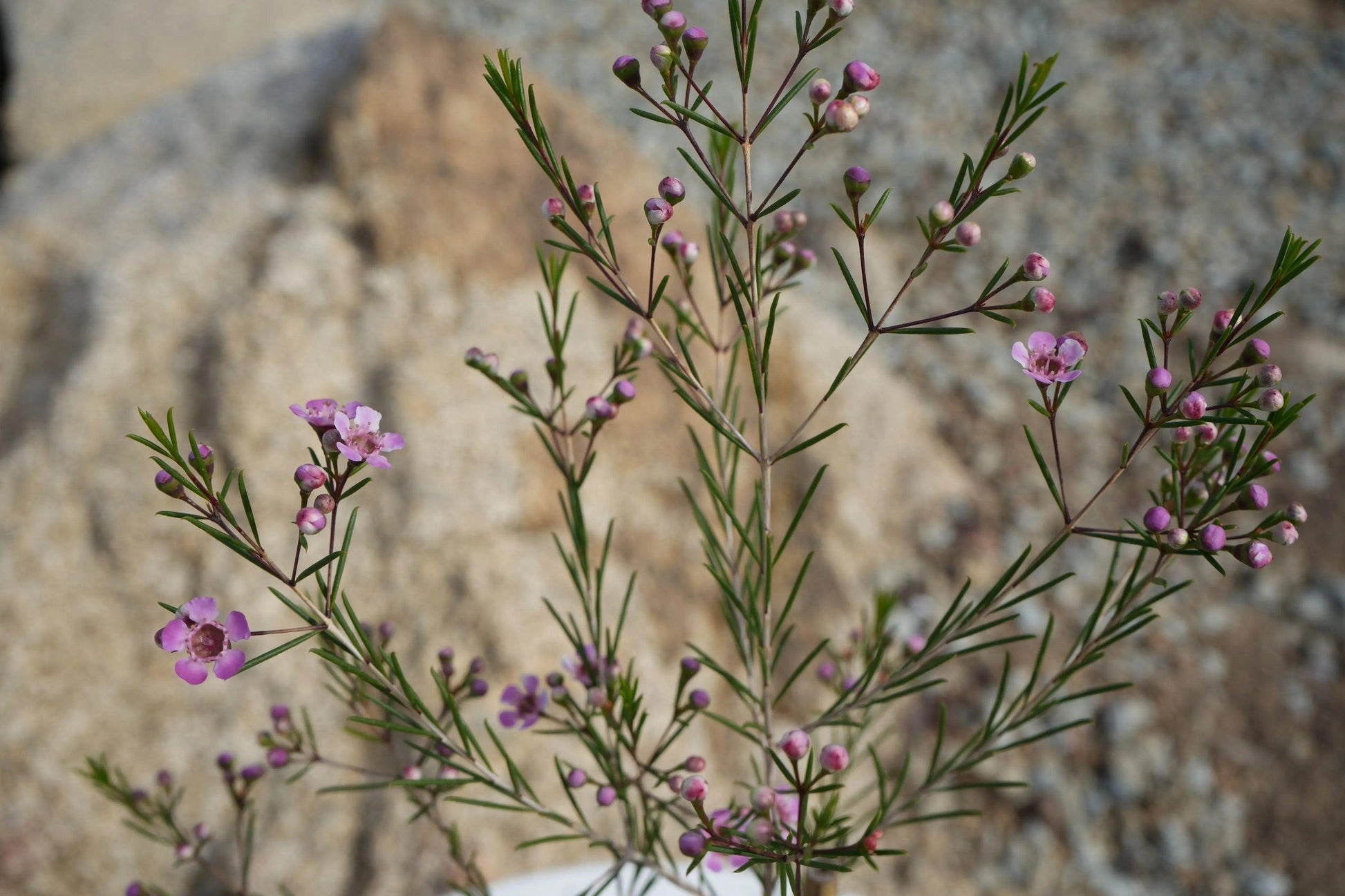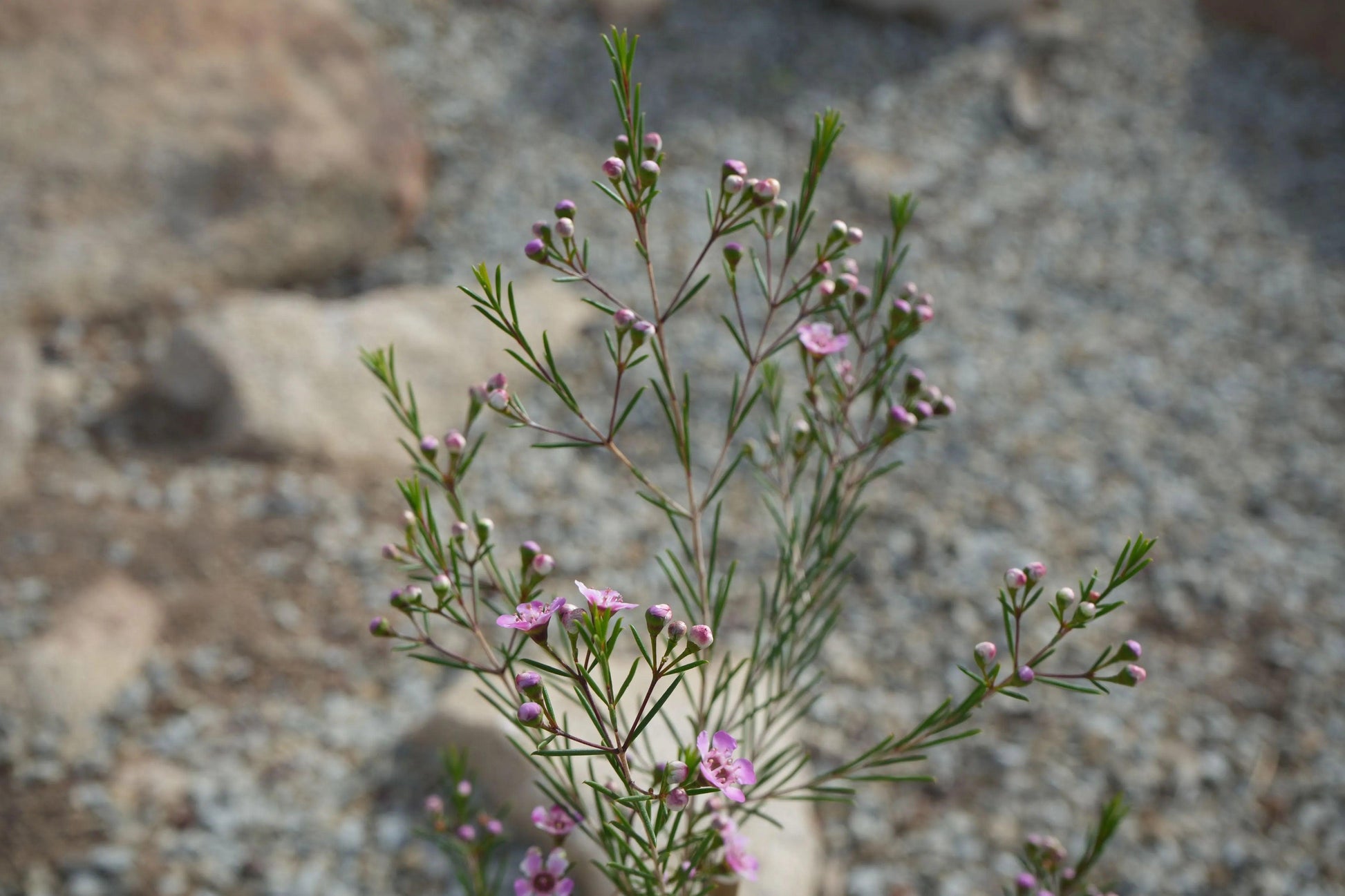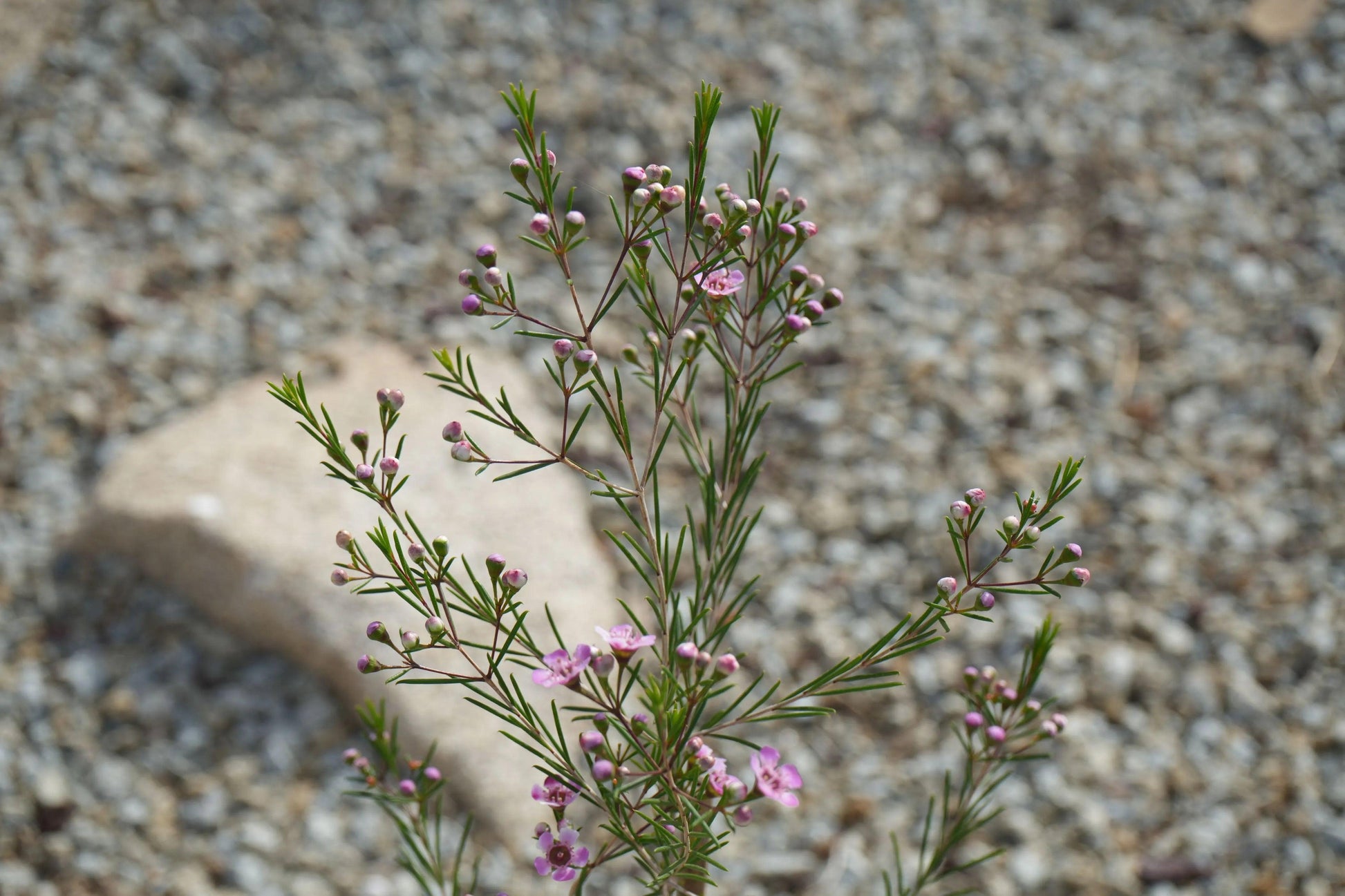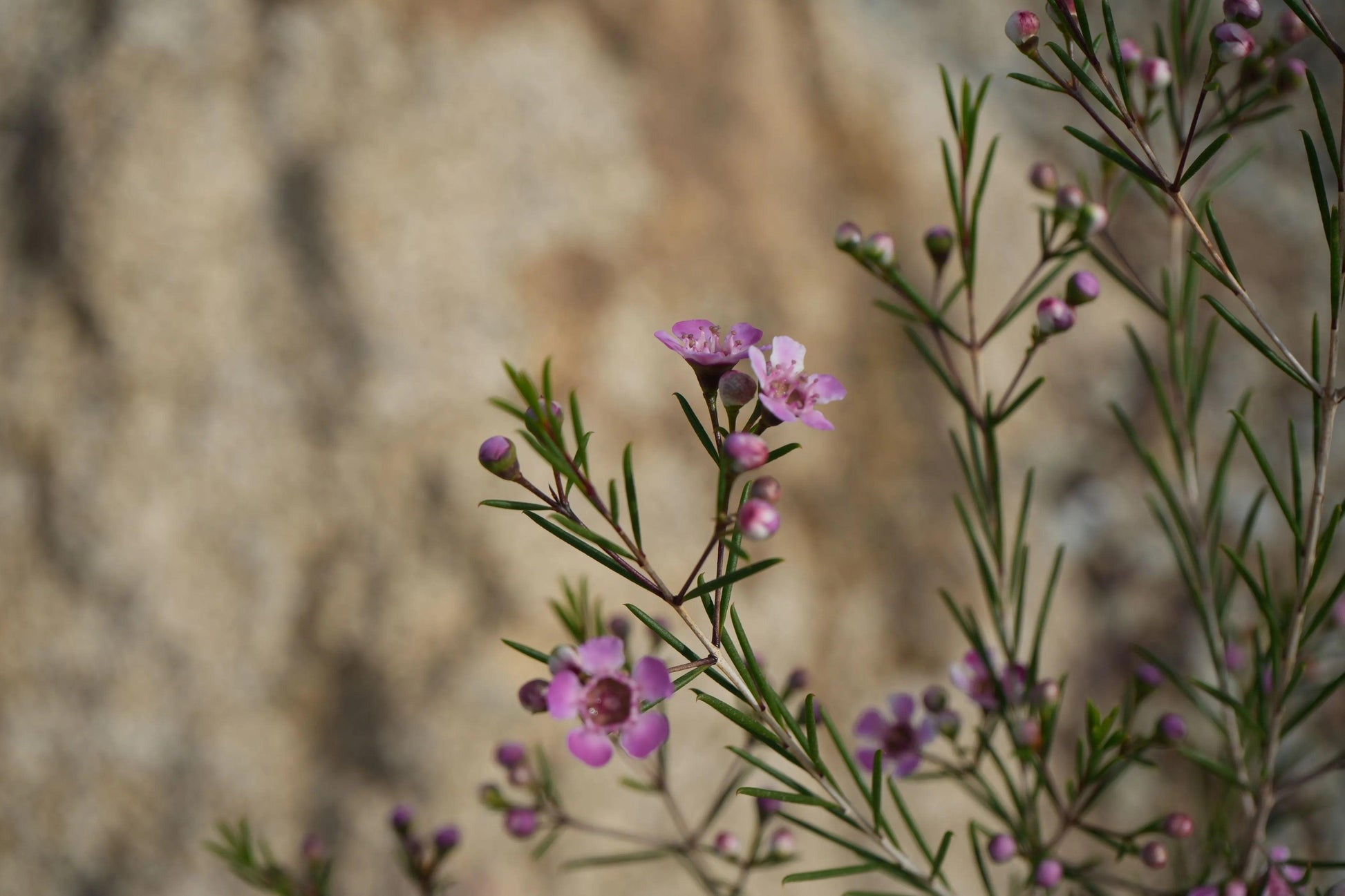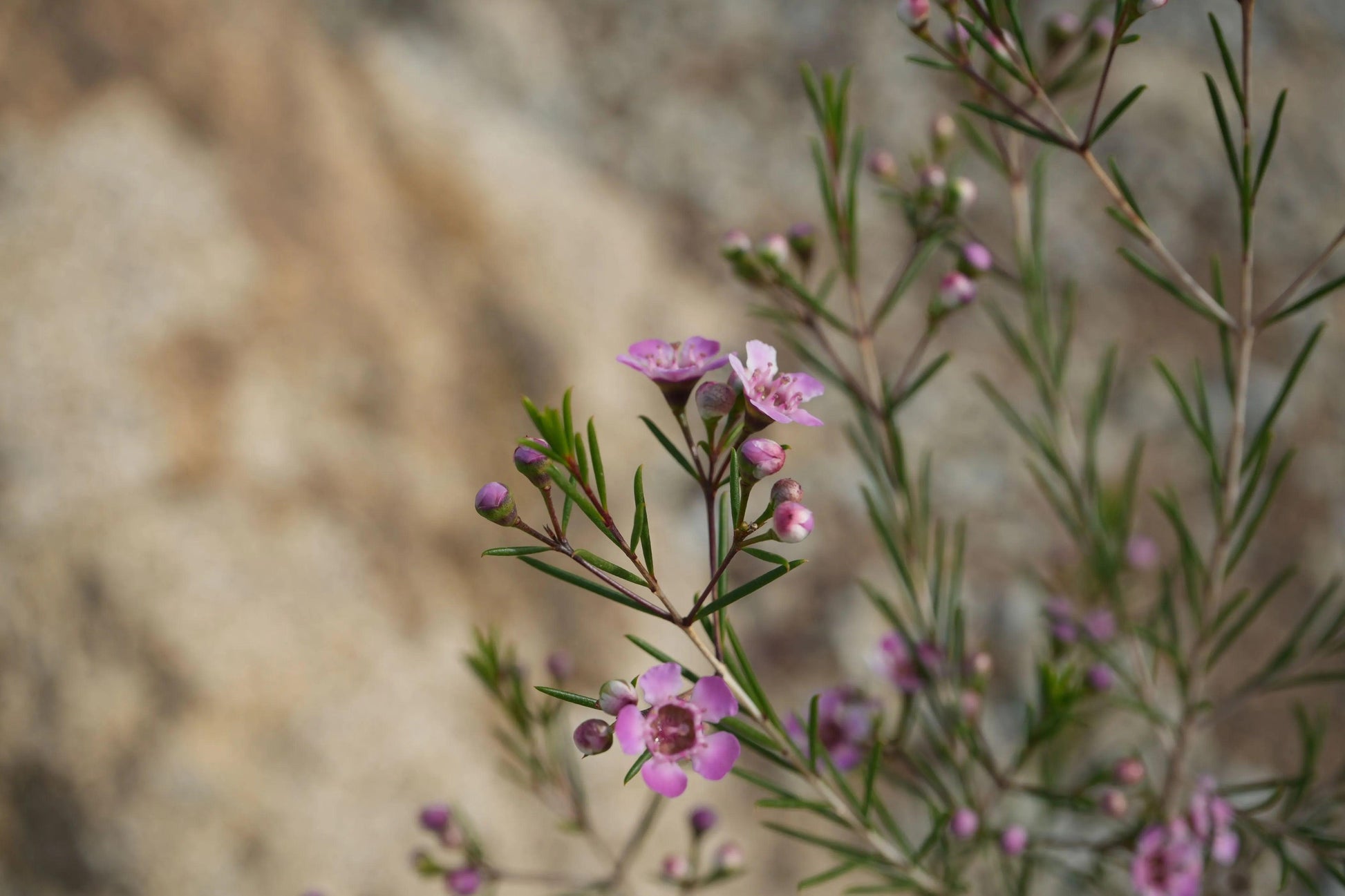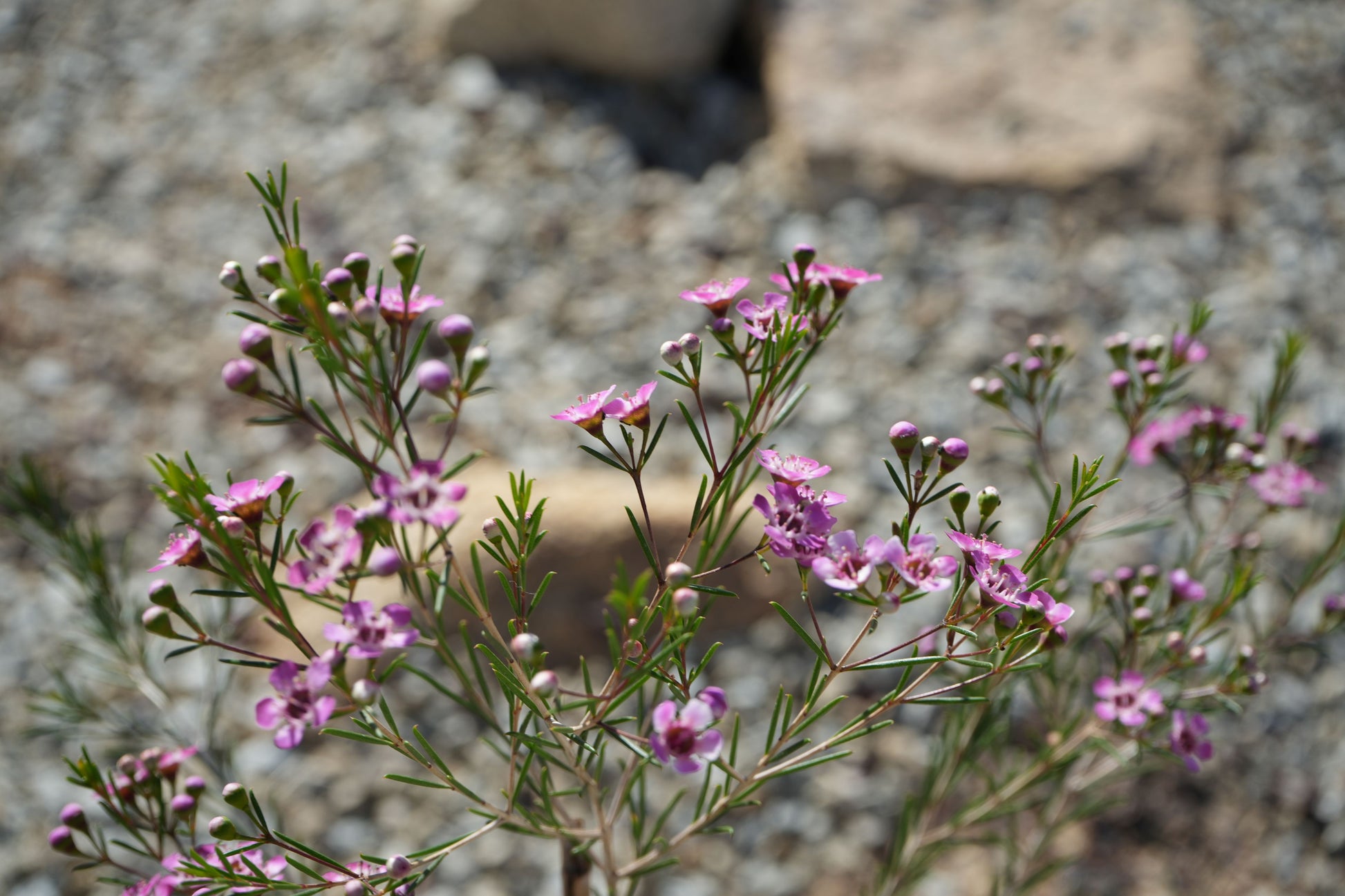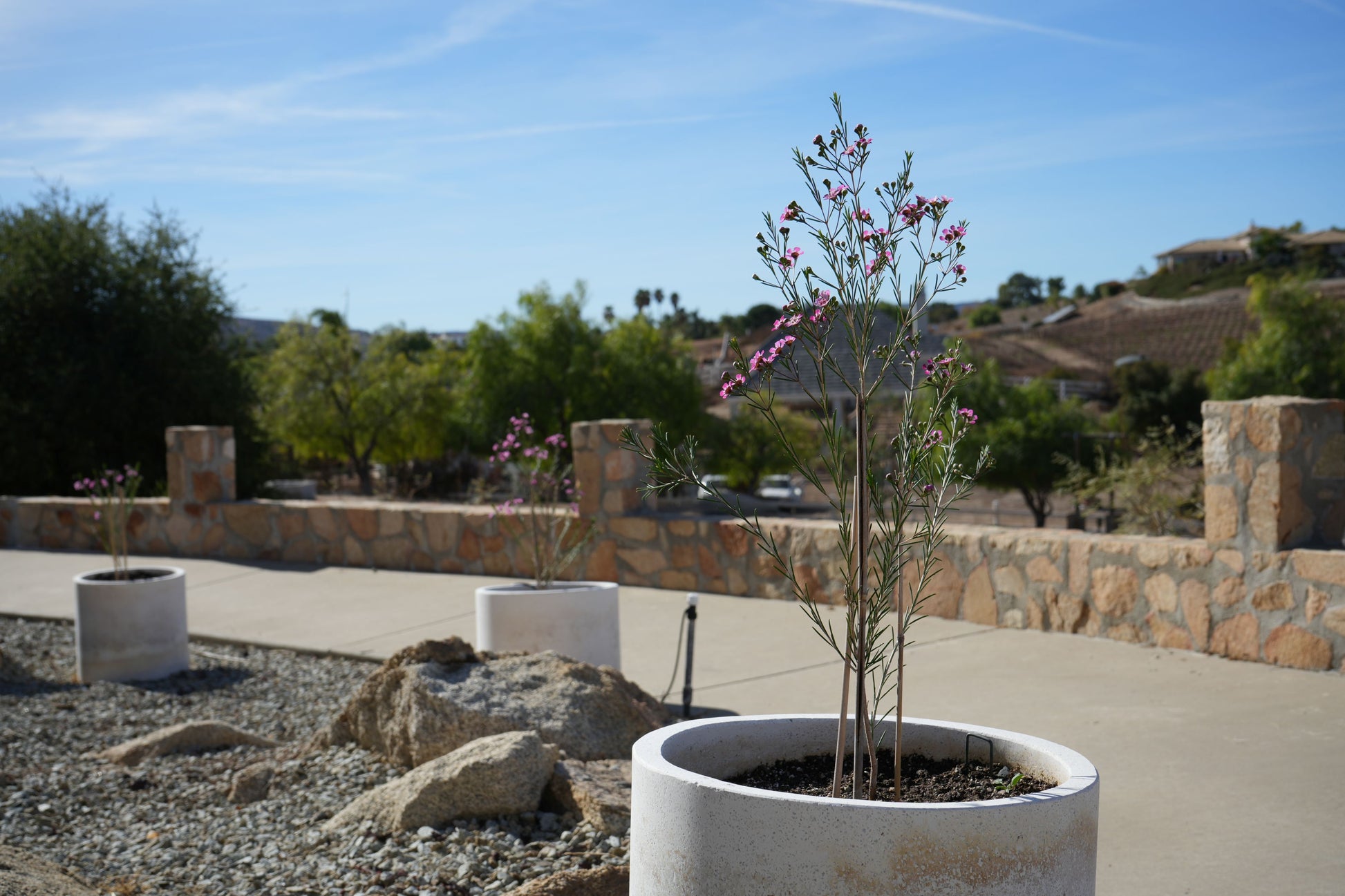Bonte Farm
Chamelaucium uncinatum Waxflower: A Burst of Beauty
Chamelaucium uncinatum Waxflower: A Burst of Beauty
Couldn't load pickup availability
🌸Chamelaucium Waxflower Collection: The Hardy, Year-Round Bloomers
The Chamelaucium Waxflower (Chamelaucium uncinatum) is an exquisite Australian native shrub renowned for its showy, long-lasting flowers and appealing, fine foliage.1 These drought-tolerant plants are a staple in low-water gardening and the global cut flower market, thanks to their exceptional vase life and vibrant colors.2 Our collection features four premium cultivars—Purple Pride, Sweet 16, Dancing Queen, and Southern Stars—offering a stunning spectrum of colors and forms. The Waxflower is a low-maintenance, year-round performer, perfect for adding texture, color, and evergreen interest to sunny, well-drained gardens.3
Botanical Characteristics
|
Characteristic |
Detail |
|
Scientific Name |
Chamelaucium uncinatum |
|
Common Names |
Geraldton Waxflower, Waxflower, Wax-plant. |
|
Growth Habit |
A dense, upright, bushy evergreen shrub with a graceful, slightly arching habit. |
|
Foliage |
Fine, needle-like, aromatic foliage with a pleasant scent when crushed. Leaves are a deep green color and often feature tiny, hooked tips (uncinatum). |
|
Flowers |
Five-petaled, waxy flowers borne along the stems, giving the plant its name. They are exceptionally long-lasting, often blooming from winter through spring. |
|
Cultivar Colors |
Purple Pride: Deepest purple/burgundy buds opening to vivid purple flowers. Sweet 16: Flowers that transition from white to deep pink/burgundy as they mature, offering two colors simultaneously. Dancing Queen: Double-petaled, full, ruffled pink flowers resembling small roses. Southern Star: Profuse white flowers with a central pink or red eye. |
|
Flowering Season |
Extended bloom period, typically late winter to spring, providing essential color when few other plants are flowering. |
Mature Size
The Waxflower varieties are generally medium to large shrubs, making them versatile for landscaping.
- Height: Typically grows between 4–7 feet (1.2–2.1 meters) tall.
- Spread: Ranges from 4–6 feet (1.2–1.8 meters) wide.
- The size can be easily managed and kept smaller with regular pruning, making it adaptable to various garden sizes.4
USDA Hardiness Zone
The Waxflower thrives in warm climates and is best suited for USDA Hardiness Zones 9–11.5 It is sensitive to heavy or prolonged frost but can tolerate brief drops in temperature once established.6 It performs optimally in coastal and Mediterranean climates.
Cultivation and Care
|
Aspect |
Care Instructions |
|
Sunlight |
Requires full sun (at least 6 hours of direct sun daily) to ensure heavy flowering and dense, compact growth. |
|
Soil |
Mandatory requirement: Extremely well-drained soil. It tolerates poor, sandy, or rocky soils and prefers a neutral to acidic pH. Poor drainage will quickly lead to root rot. |
|
Water |
Highly drought-tolerant once established. Water regularly during the first growing season. Mature plants require minimal water and should be allowed to dry out completely between waterings. Ideal for xeriscaping. |
|
Fertilizer |
Crucial: Avoid high-phosphorus fertilizers. Like many Australian natives, it is phosphorus-sensitive. Use a specific low-phosphorus formula or an organic, slow-release fertilizer sparingly in early spring. |
|
Pruning |
Essential for maintaining shape and maximizing flowers. Prune lightly after the main flush of bloom to encourage bushiness. Pruning stems for cut flowers naturally helps shape the plant. |
Landscape Use
- Hedge and Screening: Dense foliage makes it an excellent choice for a low to medium privacy hedge.
- Cut Flower Garden: Primarily grown for its long-lasting, beautiful blooms—a fantastic source of year-round floral material.
- Coastal Gardens: Highly tolerant of salt spray and sandy soil, making it a reliable coastal landscape plant.
- Xeriscape/Low-Water Design: A foundation plant for water-wise gardens due to its low irrigation needs.7
- Container Gardening: The compact varieties (Sweet 16, Southern Star) perform beautifully in large pots.
Wildlife Attraction
The abundance of flowers provides nectar for native bees and is a pleasant sight for other pollinators. While not a primary feed source, the dense growth offers good shelter for small birds.
Pest and Disease Resistance
The Waxflower is a robust and resilient plant that is generally pest-free.8 The primary disease threat is root rot, which is directly linked to overwatering or poor soil drainage. Ensuring soil conditions are light and dry is the best form of defense.
Propagation
To preserve the specific color and growth characteristics of cultivars like Purple Pride and Dancing Queen, propagation is exclusively done via semi-hardwood cuttings. Cuttings are best taken in late spring or early summer. Seed propagation is not recommended as it will not reliably reproduce the traits of the parent cultivar.
Share
